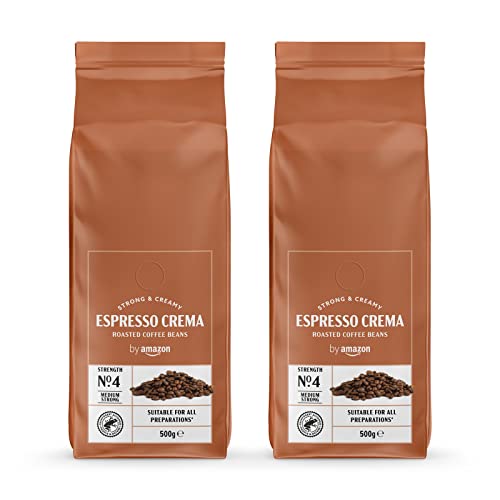Coffee Bean Types: Arabica, Robusta, Liberica, and Excelsa
If you're a coffee enthusiast you're probably aware that different kinds of beans produce varying flavor profiles. Find out about four of the most widely used varieties: Arabica. Robusta. Liberica. and Excelsa.
Excelsa beans are one of the varieties of Liberica that is only grown in Southeast Asia. They have a more fruity and tarter flavor profile, and are often added to coffee blends to enhance the flavor.
Arabica
Arabica is the most sought-after coffee in the world, making up 75% of global coffee bean production. Arabica beans are more mild and sweeter than Robusta and come in different flavors. The flavor and aroma of coffee are influenced by the conditions under the conditions it is grown and the methods of processing used.
The word "coffee" is derived from the Arabic word meaning berry. Coffee beans are actually seeds which grow inside bright red berries. It is believed that the ancient Ethiopian shepherds discovered that their goats were energized after eating berries. The cultivation of coffee grew rapidly all over the world.
Coffee beans can be grown at higher altitudes and are capable of thriving when exposed to cold temperatures and lots of rain. This is one of the reasons that Arabica is regarded as the best tasting coffee.
Many specialty coffee shops and roasters focus on the ethical source of arabica beans, with a focus on fair wages for farmers and sustainable farming practices. These companies blend arabica beans to create unique specialty coffees that are suitable for many different brewing techniques. Blending allows for control over the aroma, flavor, body, and acidity of the coffee and is frequently preferred to achieve an even and consistent flavor that appeals to a wider market.
Robusta
Robusta beans are the second most sought-after type of coffee bean around the world. They contain more caffeine per bean than Arabica, and are more resistant to disease and pests. They also contain higher levels of chlorogenic acids, which are naturally-occurring antioxidants. These acids can cause oxidation in the coffee's brewing process and cause undesirable flavors.
The plant itself is more robust than arabica, able to grow in less favorable climate conditions and at lower elevations. It can withstand higher temperatures and thrives in direct sunlight. It produces more coffee per plant and grows more quickly than arabica. This makes it a more economically viable crop to cultivate.
While it may sound counterintuitive, Robusta and arabica beans are often blended to make coffee blends. If you've noticed the names of countries like Uganda or Kenya on a coffee bag then it's likely that there's some robusta as well.
The majority of roasters utilize a mix of arabica and coffee beans to reduce costs while maintaining the quality. In order to preserve the quality of the flavor, it's essential to select a high-quality bean from a source that you are confident with. This can be done by purchasing the beans directly from farmers.
Liberica
Liberica beans are more or less football-shaped, which makes them distinct from other varieties of coffee beans. They have an aroma that is floral, fruity and smoky. They are often added to other coffee bean varieties to create the fuller, more robust flavor.
Liberica coffee beans are grown in West Africa and Malaysia (Borneo) as and in Southeast Asia. They can grow in low altitudes, and they can tolerate hot, humid climates. They also have a better resistance to disease than Arabica and Robusta.
These characteristics make them ideal for growing at home. It is possible to purchase the seeds online from a number of sources, but it is best to purchase them from local producers to ensure the quality of the beans. The ideal conditions for growing Liberica coffee are fertile, deep volcano soils with a pH that is moderately acidic as well as sufficient annual rainfall.

Another type of coffee bean is Excelsa that was once thought to be a separate species, but is now classified as a variation of Liberica. The coffee beans that are oval in shape are grown on large coffee plants, which can grow to 20 to 30 feet in height at medium altitudes. They have a distinct taste that is both fruity and tart, which has made them a popular choice for blends in house. They have a milder scent and a lower caffeine content than Arabica or Robusta however they possess a distinct depth of flavor.
Excelsa
Although they're the fourth-most popular type of coffee beans, Excelsa beans aren't quite as easily accessible as Arabica or Robusta. In fact, they were considered a separate coffee plant species until 2006 when they were reclassified to an alternative to Coffea liberica var. dewevrei. Currently, they're cultivated primarily in Southeast Asia and account for 7 percent of the world's coffee production. These beans have a distinctive teardrop shape and have an eerie, dark taste. They're often used in blends to give extra body and a rich, tart, ripened fruit taste.
Arabica beans are by far the most popular and are renowned for their sweeter flavor. They thrive in warm, tropical climates and high altitudes. They have a little acidity. When properly roasted and brewed they may have notes of chocolate, nuts, or even fruit.
Robusta is the second most adored coffee around the world. It is responsible for 40% of the coffee consumed worldwide. Robusta beans are more round and smaller, yet contain twice the amount of caffeine as Arabica. They also have more bitterness than the other two varieties, and tend to have earthy and woody undertones.
After having coffee beans bulk buy of the four most popular varieties you can now choose your favorite brew. If you're looking for a smooth soft, delicate flavor, go for an arabica bean or a blend of robusta and arabica beans.
